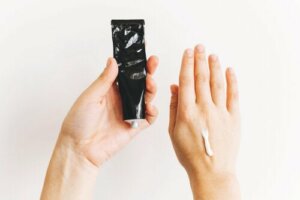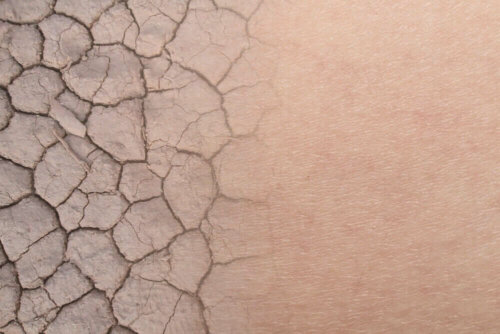Characteristics and Uses of Diprogenta

Diprogenta is the name of a medication composed of the combination of betamethasone dipropionate and gentamicin sulfate. It’s used as a treatment for inflammations by infected dermatosis. It’s a cream, and so its use is exclusively topical — external, that is.
What’s diprogenta?

Diprogenta is a medication with two different active ingredients: corticosteroid betamethasone, as dipropionate, and the bactericidal antibiotic gentamicin in the form of sulfate.
Betamethasone dipropionate has anti-inflammatory, immunosuppressive, and anti-proliferative properties. Corticosteroids inhibit inflammatory and allergic skin reactions when used topically. They have a vasoconstrictive action and thus, their immunosuppressive properties reduce hypersensitivity.
As you can see, these substances relieve symptoms such as erythema, edema and as well as itching, burning sensation, and pain. The anti-inflammatory effects are the result of the inhibition of the formation, release, and the activity of inflammation mediators.
Similarly, gentamicin sulfate is an aminoglycoside antibiotic with a bactericidal effect. Its mechanism of action inhibits the protein synthesis of the bacteria. In general, gentamicin acts against many gram-negative and some gram-positive aerobic bacteria.
Diprogenta acts relatively quickly and its effects are long-lasting. It’s for this reason that you can apply a thin layer up to twice a day on the area you’re treating.
Directions for diprogenta
This ointment can relieve inflammatory manifestations of corticosteroid-responsive dermatoses, especially when these complicate due to a secondary infection caused by gentamicin-sensitive microorganisms.
These dermatoses may include:
- Solar
- Eczema
- Psoriasis
- Dyshidrosis
- Exfoliative
- Lichen planus
- Neurodermatitis
- Contact dermatitis
- Atopic and seborrheic dermatitis
As we mentioned above, this medication decreases inflammation and relieves itching and discomfort. In addition, it takes care of possible infections that are sensitive to the action of gentamicin.
However, keep in mind that you shouldn’t use it for more than two weeks. This is because it can produce bad side effects.
Find out What’s Atopic Dermatitis?
Possible side effects of diprogenta

The side effects that can occur as a result of long-term use of this drug or for treating large areas of the body are:
- Skin atrophy
- Inflammation of the hair follicles
- Allergic reactions and infections
- Redness, acne, and skin rashes
- Skin dryness or hyperhidrosis
Other severe side effects include alterations in the skin and other systems and even in the developmental process of children. In addition, there may be a tolerance to gentamicin and it facilitates future infections that are resistant to this antibiotic.
This medication has more aggressive reactions that can delay normal growth in children. This is why you mustn’t use it for anyone under 12 years old.
Precautions and contraindications
As we said above, don’t use this medication in children. Furthermore, pregnant women should avoid it too, especially during the first trimester, as well as those who are nursing.

People allergic to the components of this drug shouldn’t use it. Also, don’t use it for viral or fungal infections, syphilis, tuberculosis, oral, ocular, or genital inflammation.
Don’t use this medication in large skin areas, in those covered with bandages, or in those with folds. This is because the latter lend themselves to the proliferation of bacteria and fungi and you may develop a resistance to it.
Furthermore, in cases of psoriasis accompanied by infection, a doctor must supervise your use of this drug and closely monitor it. Note that you must never use diprogenta on open wounds.
Any use of this drug on other skin conditions will only camouflage its symptoms and either prevent or delay a proper diagnosis by a dermatologist.
You might like to read about Dermatitis Neglecta – When You Don’t Shower
Lastly, diprogenta has powerful antibacterial activity and anti-inflammatory effects. The drug is non-toxic and has a very good systemic tolerance as long as you follow all instructions and contraindications.
All cited sources were thoroughly reviewed by our team to ensure their quality, reliability, currency, and validity. The bibliography of this article was considered reliable and of academic or scientific accuracy.
-
Gip, L. (1974). A new topical steroid antibiotic combination, diprogenta. Current Therapeutic Research – Clinical and Experimental.
-
Ceballos-González, S., Torres-Cantero, C., Trujillo-Hernández, B., Muñiz, J., Huerta, M., Trujillo, X., & Vásquez, C. (2006). Comparación de la efectividad entre la aplicación de aceponato de metilprednisolona 0.1% y dipropionato de betametasona 0.05% en niños con prepucio no retráctil. Gaceta Medica de Mexico.
-
Cabrera, M. E. (1985). TRATAMIENTO DE DERMATOSIS CORTICOSUSCEPTIBLES GRAVES O RESISTENTES CON CREMA DE DIPROPIONATO DE BETAMETASONA CON GLICOL DE PROPILENO. Investigacion Medica Internacional.
This text is provided for informational purposes only and does not replace consultation with a professional. If in doubt, consult your specialist.








